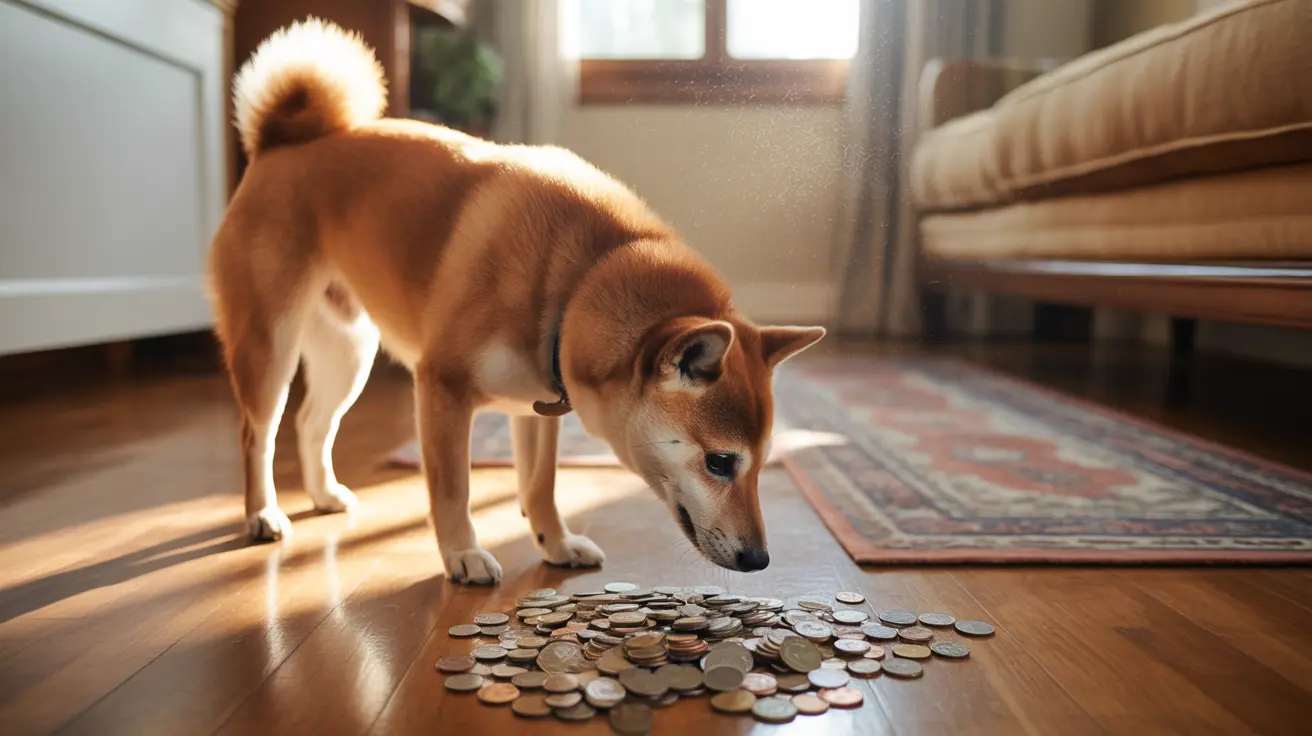The Essential Role of Zinc in Dog Health
Zinc plays a vital role in maintaining your dog's health. This mineral is crucial for:
- Immune system function
- Skin and coat health
- Protein and carbohydrate metabolism
- Hormone production
- Wound healing
The Association of American Feed Control Officials (AAFCO) recommends specific zinc levels in dog food: 120 mg/kg for adult dogs and 150 mg/kg for puppies. These carefully regulated amounts ensure your dog gets the zinc they need without risking toxicity.
Common Sources of Zinc Toxicity
Most cases of zinc poisoning in dogs don't come from their food but rather from ingesting zinc-containing objects or substances, such as:
- Pennies minted after 1982
- Metal hardware (nuts, bolts, screws)
- Zinc oxide creams and ointments
- Dietary supplements
- Jewelry
- Batteries
Recognizing Zinc Poisoning Symptoms
Early detection of zinc toxicity can be crucial for your dog's survival. Watch for these warning signs:
- Vomiting and diarrhea
- Loss of appetite
- Lethargy and weakness
- Pale or yellow gums
- Dark or orange-colored urine
- Increased heart rate
- Difficulty breathing
Treatment and Emergency Response
If you suspect zinc poisoning, immediate veterinary care is essential. Treatment typically includes:
- Removal of the zinc source (sometimes requiring surgery)
- Supportive care with IV fluids
- Blood transfusions if needed
- Chelation therapy to remove zinc from the body
- Medication for symptom management
Prevention and Safety Measures
Protecting your dog from zinc toxicity involves several practical steps:
- Keep coins, metal objects, and batteries out of reach
- Store zinc supplements securely
- Use pet-safe alternatives to zinc oxide products
- Monitor your dog during walks for scavenging behavior
- Regular home safety checks to remove potential hazards
Frequently Asked Questions
Is zinc bad for dogs, and what are the common sources of zinc toxicity?
Zinc isn't inherently bad for dogs - it's actually essential for their health. However, excessive zinc from sources like pennies, metal hardware, or zinc oxide products can be toxic. The most dangerous sources are typically metallic objects containing zinc that dogs might swallow.
What are the symptoms of zinc poisoning in dogs, and how quickly do they develop?
Symptoms can develop within hours of ingestion and include vomiting, diarrhea, lethargy, pale gums, and dark urine. Severe cases may progress to anemia, organ failure, and seizures. The speed of symptom development often depends on the amount and form of zinc ingested.
How can I prevent zinc toxicity in my dog, and what safety measures should I take at home?
Prevent zinc toxicity by keeping metallic objects, coins, and zinc-containing products out of your dog's reach. Regular house inspections, secure storage of supplements, and close supervision during walks are essential safety measures.
What is the treatment for zinc poisoning in dogs, and how effective is it if started promptly?
Treatment typically involves removing the zinc source, supportive care, and possibly chelation therapy. When started promptly, treatment is often successful. The prognosis is best when veterinary care is sought immediately after exposure.
Can zinc supplements or ointments cause toxicity in dogs, and how should they be used safely?
Yes, zinc supplements and ointments can cause toxicity if ingested in large amounts. Only use veterinarian-recommended supplements and keep all zinc-containing products securely stored. Never apply zinc oxide products where your dog can lick them off.
Conclusion
Understanding the balance between zinc's necessity and its potential dangers is crucial for responsible dog ownership. By staying informed and taking proper precautions, you can ensure your dog benefits from appropriate zinc levels while avoiding the risks of toxicity. If you ever suspect zinc poisoning, don't hesitate to contact your veterinarian immediately - prompt action could save your dog's life.






